...That is, the A900 vs. the D3/D700 vs. the 5D Mark II.
I admit to feeling considerably unhappy about having to summarize my own use of these three cameras "in public." I'm sure to disappoint almost everyone. "Brand partisans" being what they are these days, I'm probably going to take it on the chin, too. I'm even a bit miffed at myself, actually. Of all the tiresome endless squabbles in photography's little corner of the internet, the hoary old "Canon vs. Nikon" debate probably ranks as #1, and I kinda promised myself I was never going to get into it. How exactly did I, then?
Anyway, I've decided that rather than carefully annotate all of my tests and trials, which wouldn't begin to convince anybody anyway, I'll just come out with it and say what I think. But you've got to promise me you'll read this next bit and remember it as you go along, please: I'm not the arbiter. I don't get the final say. I'm just one photographer...one more, out of many. And I haven't bought, and am not going to buy, any of these cameras, so anything I say is not brand partisanship on my part, or self-congratulatory pride of ownership, or anxiety that I might have made the wrong choice, or insecurity that somebody else might own something better than mine, or fear that having a "less than the best" camera might reflect on my bad photography, or any of the other motives that fuel all the passionate nattering.
Sigh. The above is not going to protect me, I know. Had to try. For the record, I don't care to name a "best" because I'm not all about status, and I could care less whatever anyone personally chooses to use. It's the picture that counts.
And now, I gotta do what I gotta do.
The ultimate in image quality: Belongs to the Sony A900. That's assuming you're someone who knows how to use it and is willing to use it as it's intended to be used—it's not perfect for every style of work. But between its staggering resolution and very good dynamic range, its willing response to the Exposure and Recovery sliders, and its more "photographic" image quality (more on this later) and lack of digital artifacts—and despite its less-than-accurate color—it's the IQ emperor for now, among these four (i.e., the three under discussion and the D3). Downside: ya gotta need (or crave) that resolution. Otherwise it's just an also-ran. But if you do, you're just not going to get more impressive image files out of a 35mm-styled and -sized camera body.
The most recommendable: This prize goes to the Nikon D700. Given its sensible size compared to the D3, robust build, fast autofocus, overall responsiveness, superior ergonomics, unmatched high-ISO performance, and perfectly sensible file size, it's going to be the most bang for the buck for more photographers than either of the others. The Nikon is flat-out a better camera than the Canon, a point exemplified by its clearly superior autofocus performance (the 5D Mark II, when asked to autofocus, is sort of like "Huh? Oh, right," whereas the Nikon is a snappy "Yessir!") Its image quality is really pretty, and its files are superbly printable, and my feeling is that it would help more photographers take better pictures in more situations than either of the other two.
The best compromise: And here's where we come to the Canon 5D Mark II. No, the Canon does not have the A900's ungodly resolving power; but it comes reasonably close. And no, sorry, no matter what you've heard here, there, and everywhere, the Canon does not match the Nikon's high-ISO performance. Don't just look at the noise; look at the pictures. (I say that having made myself bleary-eyed poring over the most inane "test shots"—something I also once promised myself I'd do as little of as possible.) But it's pretty close. And here's the thing: it has much more resolution than the Nikon, and much better high-ISO capability than the Sony. So its win over the Nikon where resolution is concerned is bigger than the margin by which it loses to the Sony in the same department, and its win over the Sony in high-ISO performance is much more decisive than the margin by which it loses to the Nikon on that score. As they say in auto racing, when you're really good but not quite the best, what they call you is second—but strong seconds in two categories could be a good thing.
My personal choice: ...Would be to take the plunge, be a mensch, and make the call between the D700 and the A900, with their opposing but unsurpassed strengths. For many others, I'm sure, the Canon's "strong compromise" will be the way to go. (And bear in mind I've completely ignored the Canon's video capability, which many shoppers will not do.)
And to put myself on the hot seat rather than take the fence-sitter's way out ("all three cameras are fine devices with formidable imaging capabilities, and all three deserve your strong consideration"), I had to ask myself the question two ways. First, if I were spending my own scarce, hard-earned money? That would probably tilt me towards the Nikon—better support, more mindshare, greater corporate stability (at least in the camera division—once burned, and all that), much better market penetration, probably more robust resale value—plus I'm seduced by the D700's lovely B&W abilities. But if somebody put all three cameras with their respective 35mm ƒ/2 lenses on a platter and invited me to take one, I don't think I could resist the siren call of the beautiful Sony. It's a bit of a head/heart split.
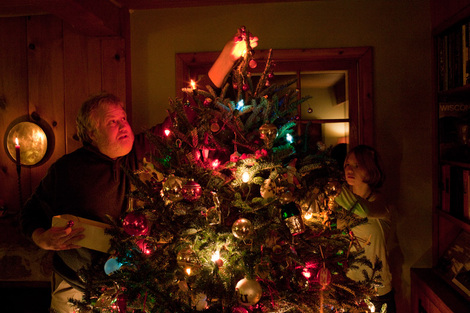
In very low light at some friends' Christmas party, the 5D Mark II and 35/1.4 acquitted themselves splendidly, giving the D700 an Alydar-like run for the money.
Artifacts
Here we go.
I have to admit I have some mild reservations about the 5D Mark II's image quality. It's very good, no question: Canon has hit the "what consumers want" targets on the nose: More Megapixels! Less Noise! (Great Taste, Less Filling). But there's at least a partial price to pay for all that tasty goodness. It shows up in the form of what I'd group under the heading "artifacts."
It's been eight or 10 years since "purple fringing" (also called "CA," not entirely accurately) first heaved into our collective consciousness as a peculiarly digital anomaly, and since then, other artifacts have been dealt with in their turn. I don't see much in the way of purple fringing at all from the 5D Mark II, but there's what Carl Weese calls "blue replacement," by which narrow objects imaged against a brighter background change from their own color into a darkish pastel hue. You see it most often in twigs and telephone lines. The 5D Mark II isn't particularly bad, but it shows up a lot more than it does from the D700. And its susceptibility to blue replacement makes it a candidate for a lovely lens aberration that I'd never actually seen before in a picture I've taken myself—longitudinal chromatic aberration (LoCA), which shifts objects in front of the plane of best focus to magenta and those in back of the plane to green.
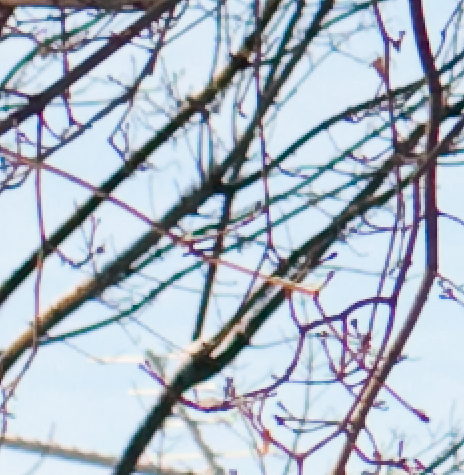
Canon EF 35mm ƒ/1.4 LoCA on the 5D Mark II
Then there's the quality of the Canon's noise. It's a bit tilted towards the chroma type, and it has a weird, blotchy character. (I don't read the forums—is the consensus that Canon is applying noise reduction to the raw file?) Note that the following is a small section of a much larger picture.
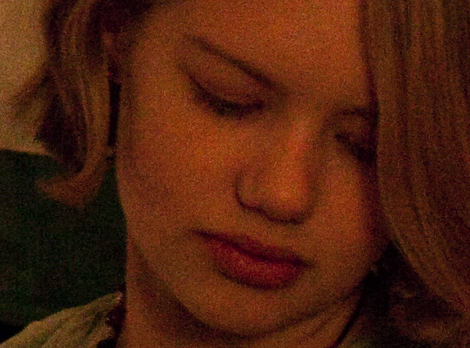
The 5D Mark II at ISO 5000 and, after you click on this image to open it, 100%
Here's a section at 300% (again, that's after you open it) to show the character of the noise:
Of course, this is pure pixel-peepery...you're never going to see the character of the noise even in imposingly large prints. I'm less sanguine, however, about the Canon's color performance at high ISOs. It seems to resist correction more than I'm used to, at least in ACR.
Then there's an entirely new artifact that, as far as I know, is unique to the 5D Mark II: sometimes you'll see black fringing next to blown highlights, but only on the right-hand side. Weird. This shows up fairly often in the shooting I've been doing at night that includes Christmas lights.
You can see it in the detail of this shot, from near the left edge. Look at the highlights at the top and bottom of this detail:
This doesn't bother me at all—you'd never see it in prints and you probably wouldn't notice it if it were visible—but hey, I'm just a reporter, I gotta report what I see.
I think we can be reasonably certain that Canon will fix this in a future firmware update.
Finally, there's highlight clipping. This is probably my most serious reservation about the Canon because it really does affect the look of pictures. Here I have to go back to the Sony A900, which is particularly good in this respect. This is a detail (maybe 30%) of a larger image, and this is somewhat behind the plane of focus (the subject was a girl lying on the bed*), so don't expect it to be sharp—just look at the tonality (luminance values):
It's just a screen shot from ACR, no corrections applied. Now look at the same section with some judicious use of the "Exposure" slider and the "Recovery" slider slammed all the way to the right (you can see that it's picked up a bit more blue, for one thing):
Nothing startling. But the above is a pictorially convincing result to me. The transitions are soft, natural, the rendition of the bright light convincing. You expect the area near a lamp to be somewhat blown out...there are three areas here that remain blown out, but they all transition naturally, and you even see just enough detail in the stem of the lamp below the shade (which is white, even) to indicate visually what it is. Tonally, I can't say I'd demand more than the above from Tri-X, which is high praise for a digital camera. This is one of the real strengths of the A900 and one of a number of reasons why I give it my personal palm for IQ.
The 5D Mark II's transitions to blown highlights, by comparison, seem to be more like a throwback to the era when 6-MP DSLRs were the SOTA**. They tend to be harsh and abrupt, and less fixable.
Canon conclusion
The 5D Mark II is a brilliant camera in many ways. It has more, and better, of most of the good things we like. But my holistic overall impression is that its images just look more digital, in some fundamental way, rather than just "photographic."
To test that impression, I compared it with what is becoming my "Old Trusty," the Pentax K20D, a currently $810 camera with a really good APS-C sized sensor (and which I also don't own, N.B.) The 5D Mark II is better than the 14.6-megapixel K20D. But it's not that much better. If the 5D Mark II lags behind the D700 by not-quite-a-stop in high-ISO noise, then the K20D lags behind the 5D Mark II also by not-quite-a-stop—certainly it looks at least as good at ISO 1250 as the Canon looks at ISO 2500 (and yes, I ran the tests). And the Canon does indeed have more resolution—but not that much more resolution. A paper size, maybe? Maybe a tad less?
In my very personal estimation (remember what you promised in the third paragraph of this post!), the A900 and D700 seem like game-changers. They both strike me as enough better than the prevailing standard that they create new paradigms—in very different ways. The Canon 5D Mark II can simply be looked at in two ways. From the positive side, it gives you the lion's share of what the other two cameras do best. And that's good. And from the negative side, it sort of seems like just another digital SLR, only better (and please don't quote that line out of context). Which way will you see it? That I can't say. All three cameras are fine devices with formidable imaging capabilities, and all three deserve your strong consideration....
____________________
Mike
*A canine girl. Don't get excited.
**state-of-the-art
Only 7 shopping days till...oh, never mind.
Amazon U.S. link
Amazon U.K. link
Amazon Germany link
Amazon Canada link
B&H Photo link
Adorama Camera link
Featured Comment by Jeff Baker: "After reading every reviewer's opinions, it seems a leap of faith must still be made, by each shopper individually, and then the real fun begins. There are subtle differences that 100 reviewers might not notice that may make or break your world. The camera is the front end of the workflow, and a lot can be done downstream to enhance, fix, or adjust whatever issues these cameras might have.
"I have an original 5D, and the more I read, the less inclined I am to upgrade to anything. I'm pretty much convinced my 5D has some magic qualities I've not seen elsewhere, and it produces prints up to at least 2x3 ft. without problem. Not sure what else I need. Yep, it doesn't like to focus in very low light, and maybe has other issues, but there's lots of other places to spend money."
Featured Comment by sfwrtr: "Interesting article. I did note that you used ACR to do the Canon 5D Mark II conversion. I have discovered massive defects in the ACR 5.2 release in regards to this camera. The bundled Canon DPP application, though unwieldy, does a better conversion from RAW with significantly fewer artifacts and improved tonality. I don't know about the fringing, but CA compensation is part of the DPP process and it might handle the green and purple problem (dunno). You might want to check it out. I must say I am annoyed at Adobe for releasing my beloved ACR converter too soon, and so is the Canon rep I've spoken to. By the way, I've posted an example of the difference as an animated GIF.
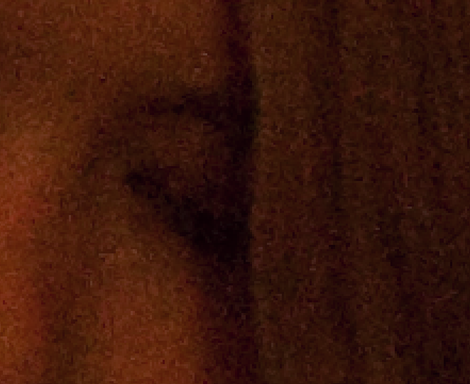
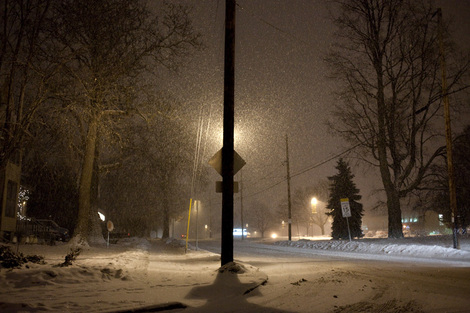
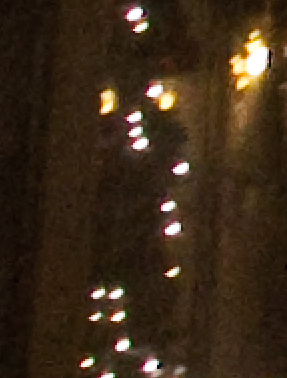
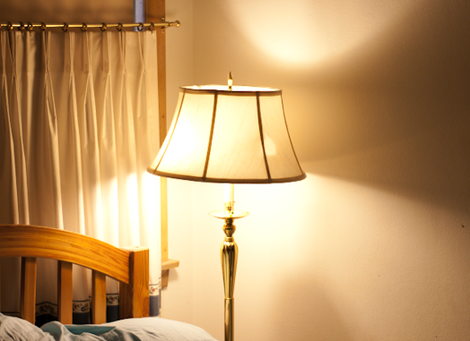
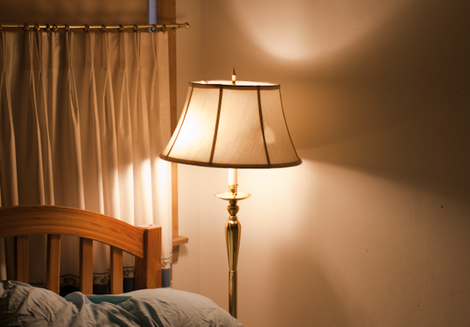



Thanks for the informative post. As a Canon shooter I must admit I was a little disapointed to hear this.
I'm itching to step up from a APC sized sensor to a full frame. I doubt I'll wait for the next 5Dxx model, but it is nice to see the camera's limitations put out in an honest and fair profile.
Cheers,
Alex
Posted by: Aleksei Saunders | Thursday, 18 December 2008 at 10:08 AM
A very interesting and honest appraisal, but more importantly, for me anyway, is the fact that you also find the trusty old Pentax K20D playing in the same ballpark at well under half the cost.
As a poor Brit, the cost of gear is a BIG issue and also as a K20D user (and Pentax's great and affordable lenses), I'm glad to see little David kicking some dust into the eyes of the Goliaths! ;-)
Posted by: Richard Day | Thursday, 18 December 2008 at 10:08 AM
I like the bit about the Pentax K20 CHEERS Vic
Posted by: Vic Cross | Thursday, 18 December 2008 at 10:08 AM
Hi, I have compared by using both the Canon and the Nikon and I found the exact opposite of what you did - The Nikon was the one hesitating to focus in lower light (I have a 20D and it never once has hunted for focus with any lens in lower light) but the Nikon not only hunts but has to blind you with a white light it emits so it can focus - the Canon focuses on it's own with no extra light shooting out. Admittedly the 5D M2 is a little slower than my 20D which just never has any focus issues, but that camera is known for that and we may never see the likes of AF that good for some time. As far as noise, Canon's algorithm has always struck the best balance at low noise high detail as I have compared it to Nikon in the past too. Shadows are just plain noisy on the D700 at 3200 ISO and they are very smooth on the Canon - even at the maximum NR setting. When you do maximum NR on the Nikon, the image starts to look smeary and digital. The Canon image does not. Foliage such as pine trees look very natural with the Canon, but the Nikon renders them fake looking - it's the same problem Nikon has had since their earliest cameras including P&S's - the images just to not always render natural - they often have a weird fake look and color shift that is very hard if not impossible to fix (in the past it was sort of a bronzing thing). I tested the D700 with the 24-70 2.8 lens which is one of the best. Not impressed. What did impress me about the Nikon is the AMAZING set of features and tweaks that can be done. This really blew me away. Canon should definitely take a lesson and at least let people turn on a crosshair grid of some kind if nothing else. I cannot speak for the Sony, I need low noise at high ISO so the Sony won't help me there.
The best way is to test all cameras for yourself to see what "look" you like best, after all it's the end product we care about, so it's less about features and more about getting the shot.
Posted by: Jim | Thursday, 18 December 2008 at 03:47 PM
Very good comparison, thank you.
Posted by: Android | Thursday, 18 December 2008 at 03:47 PM
Mike, thanks for your obvious effort to be unbiased and provide useful information.
I am looking seriously at these cameras for landscape use. The Sony with the Sony/Zeiss lenses would seem to be the ideal tool for me except for one big problem: no live view. The prospect of spending my time afield with my face up against a camera back is a big problem. I have a 2 x 3 view camera and looking at a very high res 2 x 3 monitor would be similar. Just how good IS that viewfinder? Relative to a ground glass?
Because of that I was considering the 5Dmk2. But the artifacts evident in the files are a problem for me. They remind me of the kind of problems that exist in the P&S world that quite simply should not be occurring at this price point. And as has been pointed out, some of these might be dealt with through firmware (IF Canon chooses to) but it is unlikely that all can be. I don't need the high speed/low noise functionality, so what appear to be compromises to allow the 5d2 to be all things renders it a compromise in image quality across the board. And given the commodity nature of digital cameras—the reduction of the resale value to nearly nothing when a replacement model comes out—makes purchasing something like this as a an interim camera out of the question.
The Nikon? Maybe the 700x, but not the 700. Besides I have had some serious issues with the way they marketed and supported the 8000 and 9000 scanners. The 8000, which I purchased and still have, has a number of design issues that create some serious image quality problems. But their idea of how to deal with it was to come to market with the 9000 and tell the 8000 purchasers that the solution (to the problems that they admitted to) was to buy a 9000. At full price. So I'm not eager to purchase another Nikon product.
So now I'm stuck for a good digital camera. Too bad, I was looking forward to it.
Your article helped to solidify my thinking in the way a second and confirming opinion can do. Thanks again.
Posted by: Mark Muse | Thursday, 18 December 2008 at 03:47 PM
Mike,
I'm very sorry about your family...
and your sod house.
My condolences,
Jammy
;-)
Posted by: Jammy Straub | Thursday, 18 December 2008 at 03:47 PM
Good review of all three, Mike. I know it took a while to write that, and we are all thankful for your efforts.
I'm not too surprised that the Nikon has slightly better noise performance than the 5D MkII, as it's resolution is almost half that of the Canon. Assuming that the in-camera noise reduction algorithms are roughly equal (or at least, equally "modern"), one could infer that the Nikon would have better noise performance because the Nikon has bigger pixels, buckets, as it were, to gather rain (photons). Hence, it's signal to noise ratio would be higher per pixel in low light conditions than the 5D MkII and A900. Simple physics. The fact that the Canon did as well as it did compared to the Nikon must mean that Canon pulled some rabbits out of the hat with the in-camera NR algorithms.
Personally, I was kind of hoping that Canon would have left the resolution of the MkII where it was with the original 5D, and implemented Digic IV and the dust-removal system. Then we would likely have a camera that had as good or perhaps slightly better noise performance than best-in-class, and still plenty of resolution to make large prints.
As I pointed out in a previous post and sent you prints to show first-hand, one doesn't need 24 megapixels to make large prints. It's really about workflow and careful printing "management".
Posted by: Stephen Scharf | Thursday, 18 December 2008 at 03:47 PM
Seinberg, very good question;
Mike, if you downsize the 5d2's images to the D700's resolution, do you still get the difference in noise, and just as importantly is the purple fringing still so noticeable?
And you seem to downplay the color accuracy of the Sony. Seems like a major determinant of IQ, so how much of an issue is it?
In the end, as most here have mentioned, the investment in lenses people have already made will be a major driver of the decision as to which of these cameras they get. After all who's going to wish to lose all that money invested in L lenses by switching, they may as well go to the top of the class and get a 1dsIII (or vice versa the D3X).
Posted by: Filip Makowski | Thursday, 18 December 2008 at 04:42 PM
Mike! What a breath of fresh air! Down to earth, no smoke and mirrors, or myth and rumour. Having been in this game for almost 30 years, and not been able to completely part with my Kodachrome habit and 67 format, this report proves to me that there are still people out there, testing these new offerings, without vermin in their veins.
No need to walk into the local "digital space shop" and having to keep in mind what Vincent Laforet, Joe MaNally, Thom Hogan or for that matter Michael Reichmann's opinion on Model XYZ was. Best forget the rabid geeks of DP Review.
The traditional darkroom, taught us the finer nuances of B&W, colour and depth, captured on a strip of halide covered acetate. The latent image was the result of how that picture was captured. Digital have caused a paradigm shift to the point of no matter in what "Auto Mode" the image was grabbed, it can always be rescued by means of a software application. Hence throw all the bells and whistles at a "picture" and do all the panel beating afterwards. Almost like the rescue of a train wreck after the smash. It is quite unsettling to the "old dog" who still practice the traditional principles of photography.
I want to believe this report was written against the background of that same traditional principles of photography – compose and make the picture in your eye, capture the moment with all your creative senses on high alert. Make pictures and stop comparing engine size and RAM speed!
Thank you Mike – well done!
PS: I did get into the water with a Kodak DCS 14n Pro. Made an upward move to Canon 1Ds11's, but settle back to MF with the option of digital backs. Less synthetic looking images and more colour depth.
Posted by: Matt | Thursday, 18 December 2008 at 04:42 PM
Mike,
Thank you for sharing. In a way I suppose you have managed to keep all sides equally unhappy. In my review reading moments, I try to wade through all the facts to find out if it would enable me to take great photos with whatever is on the bench. Please bear with me for my ramblings; I will get to the point.
We got into the digital realm, way back in the '90s. We started off with one of the first Canon P&S (example: http://framedandshot.com/2008/09/24/watching-the-sun-go-down/). This was, by today’s standards, a terrible camera. Our first real upgrade was to a Sony F828 (Example: http://framedandshot.com/2008/12/14/the-andes/) , after its review as “A Flawed Jewel (http://luminous-landscape.com/reviews/cameras/sony828.shtml ). This camera was a huge step up from the P&S and served us well for years. Then snapping turned to a hobby (we could afford) and our first DSLR was acquired. It was the Nikon D200 (Example: http://framedandshot.com/2008/11/03/hoops-in-the-water/ ). The IQ was stunning and photography was fun again, just as in the pre digital SLR era. As we are two, the significant other also wanted a DSLR and we got a D300 (Example: http://framedandshot.com/2008/10/25/inside-the-cactus-flower/ ). The D300 outshone the D200 in every way and the only logical thing to do was to get a D700 (Example: http://framedandshot.com/2008/10/19/after-the-storm/ ).
My point is that every one of these cameras is capable of delivering great photos. However, with every upgrade, it becomes easier to get it just right. No shutter lag, improved ISO, focus speed, burst speed etc. Pixel peeping has its place and so does comparison of features. But, it is really just a tool….
I enjoyed this review because it focused on the camera as a whole and how it works as a tool. Technical reviews are useful and will let the reader draw his own conclusions, but a "user report" is invaluable, particularly when it is backed up by experience and skill.
Thanks Mike.
Posted by: Framed and Shot | Thursday, 18 December 2008 at 08:49 PM
Enjoyed the writeup. Interesting to see how fast SOTA is advancing. Waiting for the your evaluation of the Panasonic G1. I'm sure that to many of us the FF digital are out of the question price wise and so it seems that it will be somewhat like the old film days when there was a choice between medium format and 35mm. How much quality can you afford. This isn't a whine about personal income level, I really like compact cameras. When just going out for a stroll I sure don't slip my Mamiya C220 in one pocket and a Gitzo in the other!
Posted by: john robison | Thursday, 18 December 2008 at 08:54 PM
Interesting review, thanks Mike!
In regard to the mentioned compromise of the Canon 5Dmk2: it actually goes even farther than that. when shooting sRAW you get about the same technical resolution as the D700. in a forum thread at dpreview.com 5Dmk2 sRAW was compared to D700 at high ISOs. the sRAW samples showed lower noise AND higher level of details than samples from the D700. I'd be interested to hear your opinion/conclusion on the 5Dmk2 sRAW mode.
thanks, -- Peter
Posted by: --Peter | Thursday, 18 December 2008 at 08:54 PM
I fully enjoyed reading your comparison and thought it put a nice emphasis on the most important issues.
I liked the fact you you value the degree of how "photographic" an image looks.
This aspect made me chose Pentax over Nikon.
In your opinion, how does the Pentax K20D rate against the three cameras discussed here in terms of "non-digital" images?
I believe colour fidelity and noise structure plays a role in how "photographic" an image looks. I prefer the detail retaining low noise reduction of Pentax cameras. It makes them fare worse in number comparison games, but I think the images are nicer. Nikon uses outstanding sensor technology but their low noise figures are relatively meaningless unless qualified with corresponding spatial resolution.
Posted by: Thomas Kuehne | Thursday, 18 December 2008 at 08:55 PM
Thanks for sharing your thoughts with all of us. After reading your short but concise review I have no doubt now that you are one of the best reviewers out there. Im gonna include a link to this page on my blog.
Posted by: Arturo | Thursday, 18 December 2008 at 08:55 PM
"Mike, I just have one question - how many of your readers actually know the word "mentsch?" For what it's worth, I think you are one and enjoyed the frankness of this post, which reflects how you always present your materials."
To those who are not of the cognoscenti: mensch in Yiddish is someone upstanding, decent and honorable. In German, it means a man or human.
In Jewish culture (mother to daughter): "You should marry a mensch."
Posted by: misha | Friday, 19 December 2008 at 12:52 AM
A900 really shines here! Combine that with excellent Zeiss lenses and you have a very strong competitor!
Posted by: Ekke | Friday, 19 December 2008 at 10:00 AM
"As they say in auto racing, when you're really good but not quite the best, what they call you is second"
You may be not quite as fast on the straightways as the Ferraris, not quite as fast on the turns as the McLarens, but still be best overall.
Posted by: Tom Legrady | Friday, 19 December 2008 at 10:00 AM
See what you started: http://www.fredmiranda.com/forum/topic/719117
:)
Posted by: Tom K. | Friday, 19 December 2008 at 10:00 AM
I'm smitten by the Nikon D700, and have been waiting for one on the cheap. It may be the best low light, still camera ever - just right for photo journalism. The economy has set up a chance to snag bargains as dealers face the tax season. It is an ill wind that blows no one good.
I have a lot of Nikkor glass. I’m in hopes the Nikon D3x could be an ideal (high res - deep DR) mate to the D700's low light wizardry. If that were so, I could avoid breaking what's left of my bank to get all new Sony A900 stuff, then keeping up with two systems.
Canon makes fine cameras, and lenses. Still, I have none of their gear, and switching to Canon would cost more than Sony. I would prefer a PhaseOne/Mamiya 645 for its ability to collect large files. Yet, that’s triple the cost of a D3x. Until someone breaks the price on large chips, I'm content being a small format tight wad. For me, to frugally get good commercial results means Nikon. I’ll bet I’m not alone. Odds are that Nikon knows how many we are, and where we live.
The Nikon D3x and the Sony A900 have common chip linage. Granted, the D3x has a bloated price (reminds one of road kill in July). Yet, I'm wondering about the D3x's resolution and DR. If it is as good as the Sony A900, the D3x’s price might be rationalized by not needing new glass. The D3x may even have bit better IQ than the A900.
I await your curmudgeondom. Please, don't do as another of my favorite photo mavens. For now, he has stopped his D3x order because the price was high-handed. Alas, it seems our luminous source of landscape wisdom may not shed much light on the D3x. Oh, Canada.
I agree with The Lucent One about the D3x's cost. Only there's a lot of us who have too much Nikon junk. Hence, we dance to their porky tune. Actually, Nikon strobes are hard to beat. Nikkor glass is very good. Their gear does many things well, much better than I. Yet, the D3x seems only to be an adapted D3. It’s worth maybe $1,000 more than the D3x, not several thousands more.
If Nikon needs ripping for obscene price nicking - you're the man - or, at least one of them. Still, if the D3x is a costly show stopper - your sense of fair play should prevail.
What I really, really . . . really want (along with the D700) is a good digital medium format and three decent lenses - all for less than $12,000. It’s probably coming by 2012. If Mamiya doesn’t do it, Nikon might - or Sony, or Canon. I don’t care who. Just so it’s a value and cranks out glorious files! I don’t need the cachet of a Hasseleicaflex - just good glass and a roomy chip with big, quiet photo sites. Photoshop can work magic on a good raw file. Maybe a modular system with upgradable components will become competitive. Until then, I’ll shoot small and Photoshop large.
What a great time to be a photographer, St. Ansel would be roaring with delight! So many improvements have happened, and in so little time.
Posted by: Midwheel Thays | Friday, 19 December 2008 at 07:38 PM
Well, this is certainly an interesting if not surprising set of analyses and conclusions. The one comment that stands out in my mind is the characterization of the Canon 5D II as not being as "photographic" as the other two, meaning "more digital."
I've been a Canon shooter for quite some time and have always found this to be the case with my Canon cameras, which include the 5D Mark I and the 1Ds II. I'm not at all surprised, then, to see that this is also seen in the latest version of the 5D, although I had hoped it would be corrected ... if it can be.
All in all, this is an insightful overview. It makes me interested in exploring the A900 (more out of curiosity than need) and supports my notion about NOT upgrading to the 5D II, something I decided quite some time ago. The 1Ds II suits me just fine, thank you. It has plenty of resolution, and its AF is superb in both speed and accuracy.
Thanks for the article. Really well done ...
Posted by: Stephen | Saturday, 20 December 2008 at 12:56 PM
An excellent test and chimes with the initial 5Dmk2 comments (black fringing) made by KR.
I'll still stay with film for the moment as I can achieve so much higher resolution using 50 and 100 ISO film, than digital.
Anyway, it seems that fussy people are spending about the same amount of time fiddling with software as I am in the darkroom.
Posted by: Stephen Asprey | Saturday, 20 December 2008 at 09:02 PM
this is one of the most interesring review around. something that really make me understand the impact of these cameras on my daily job. thanks for this comparison.
Posted by: Giorgio Guglielmino | Sunday, 21 December 2008 at 02:41 PM
Nikon does not allow for the use of my manual focus Zeiss lenses (both M42 and C/Y mount). Nikon is out for me, end of story.
Posted by: BorekL | Sunday, 21 December 2008 at 06:13 PM
Thanks Mike for the superb article. You are a brave guy and did wonderfully for being objective without having only "all great tools" message in fear of advertisers, etc.
So it seems that really the limiting factor on getting good pictures is the skill of photographer (we run out of excuses soon :-). And it seems that we are getting close to slide film quality on 35mm form factor.
Soon time to capitalize on my full frame Minolta AF lenses, now I'm only using the center part of the frame on A100...
Cheers, Erkki (one happy winner, when camera brand competition throws us even better tools!)
Posted by: Erkki | Monday, 22 December 2008 at 11:12 AM
The response to the Sony A900 has been interesting. It has a nice viewfinder and it has a lot of pixels. DPR took the view there were 'too many' pixels, noting some issues. Others have defended the camera, Luminous Landscape in particular. The camera is well beyond my capabilities.
I'm not sure why this camera would be a game changer. You'd basically have to ask who needs the resolution, who is willing to buy and lug the lenses. It would seem to be landscape photographers, and pretty successful ones. People with unlimited funds and the ability to write off equipment might reach still higher.
It's difficult to say what camera and lens combination is needed to make what size of print. There really is no standard. People who sell prints have to have a level of quality so high that most people will be unable to find fault. But to just hang an 11 by 14 on the wall because it means something to you, the standard is going to be a lot lower.
So, an energetic amateur could buy the A900 and never get a penny of return on the camera. The problem for the enthusiast is that walls fill with pictures. The larger you make them, the fewer you hang. To justify the capability to make a large print means what, exactly? I'm not sure how any amateur can move to another level by adding the capability to make huge prints that are exceptional. Well, there's the ego thing.
As far as the D700 goes, it's clear they are not reaching for resolution. But to me the obvious question is how the D700 matches the D300, or even the heavily discounted D200. If you can't point out obvious improvements, I don't know if the camera is a game changer.
Ultra high resolution with the highest level of dynamic range is what people did with giant film cameras. I tend to think of nature photography in these terms. It's a romantic vision, often highly idealized. I live in a region, Southern Utah, that is often photographed. That fact is, nature is not doing well around here, and the romantic vision is far from realistic.
If this is the new peak of technology in still photography, what is the future of the art form? Is it all resolution and dynamic range, subtle tonality? Or is that anachronistic? The world seems to be irrational, hard-edged and in a deteriorating state. Maybe we need less resolution and hard contrast to capture it. Maybe there are better ways to capture change, or maybe you need to tell a story, rather than composing some romantic vision of something. This is why these cameras might not be game changers. Maybe there is nothing more that needs to be done, if still photography is simply 'good enough' or maybe 'finished'? There's always progress, but is there?
With some newspapers ending paper editions, and video everywhere on news websites, what is the future of stills, anyway? I can't see any real change from these 3 cameras. I don't see how anyone could make any kind of 'statement' or project any kind of artistic vision, that could not be done with a simpler, existing camera.
Posted by: George Sears | Tuesday, 23 December 2008 at 02:26 PM
Well done! Good work to simplify our ideas! Merry xmas!
Posted by: Fun4Geek | Wednesday, 24 December 2008 at 06:23 PM
I have used all of the above manufacturers' DSLRs. Canon and Nikon are big NAMES, but unfortunately in terms of ergonomics and intuitive menu structures, they are somewhat miserable failures. I've seen great images from both, but only with great effort and lots of post-production. Sony, on the other hand...ergonomics: flawless...menu structure: hyper-intuitive, ease of use: amazing, post-processing: the most Photoshop-friendly camera I've ever encountered, image quality: rich, deep, three-dimensional, sharp, and awe-inspiring. I remember when I got my Canon Mark II 1Ds...with high expectations, I found myself very disappointed with the flat and muted colors before enhancing saturation in post-processing (even afterwards too). Nikon? Nice colors, sharp and crisp, definitely nothing to complain about...but the amount of work and effort that goes into creating that perfect Nikon image...really takes all the fun out of taking photos. Holding the A700 or A900 in your hands is indeed a religious experience. Out of the three brands, it's the Sony's color reproduction, deep saturation infiltration, density of dimensional arrays...the Sony is like a pure and untarnished extension of the mind, eye, and hand equation. To me, that's what photography should be all about. Not whose logo resides atop...just the shear feeling of joy and exuberance in taking amazing photos from the get go.
Posted by: David | Thursday, 25 December 2008 at 10:28 AM
You are a quick read Mike. I try to live with specific gear, and use it under varying conditions for some time before letting people know my opinion. Yet you seem to have nailed these cameras pretty closely in short order.
I moved from Canon 5D/1DMKIII/1DsMKIII to Nikon D3/D700 for DSLR work .... then when Sony hit the streets added the A900 and a few select lenses ... initially the Carl Ziess offerings. I shoot weddings with this gear, and you get a feel for them very quickly ... warts and all. The D700 and A900 make a powerful combination for my type of work using the strengths you outline for each.
While I have not used the new 5D, your MKII observations mirror what I had taken note of as a long time Canon shooter... that as some attributes improved others fell by the wayside ... most notably the so called "photographic qualities" ... IMO, due to the increasing placidity that make the files feel more digital. The last round of 1D-MKIIIs convinced me of that. Some people are okay with it, even like it, I don't ... so it's strictly a personal aesthetic choice.
Note: one thing that neither the Nikon nor the Canon offer is in-camera Image Stabilization ... and Sony has pulled off what many "Experts" said couldn't done. So ANY lens mounted to the A900 can offer IS ... that one feature could result in more improved images overall than any other (given that camera shake spoils more images than most anything else).
Posted by: Marc Williams | Saturday, 24 January 2009 at 03:21 AM